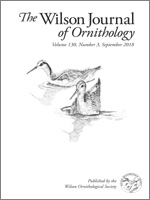The “capuchinos” form a monophyletic group within the Neotropical seedeaters of the genus Sporophila and are typically smaller than the other congeners. Many of the 12 species of this group are endangered, but reproductive information is scarce for most of them. Here we present the descriptions of nests, eggs, nestlings, and nesting habitats for the Pearly-bellied Seedeater (Sporophila pileata). From 2012 to 2017 we found 83 nests constructed in herbaceous plants present in open marshlands, 15–73 cm above water or humid ground. Nests were deep cups built of grass stems, inflorescences, and rootlets, attached with spider web. Nests measured 59.3 ± 4.7 mm outside diameter, 50.7 ± 6.5 mm outside height, 41.6 ± 3.2 mm internal diameter, and 35.7 ± 3.3 mm internal depth. Eggs were oval with white, grayish, or greenish background color with black and brown spots mainly in the obtuse pole. They weighed 1.2 ± 0.1 g and measured 16.3 ± 0.8 per 12.2 ± 0.3 mm. Clutches consisted of 1–3 eggs. Our study sites represent the northernmost reproductive areas ever documented for a migratory capuchino.
How to translate text using browser tools
1 September 2018
First description of nests, eggs, and nestlings of the Pearly-bellied Seedeater (Sporophila pileata)
Maikon S. Freitas,
Cesar A. B. Medolago,
Mariellen C. Costa,
Marina Telles,
Mercival R. Francisco,
José Carlos Motta-Junior
ACCESS THE FULL ARTICLE
birds
breeding biology
nesting behavior
reproduction





